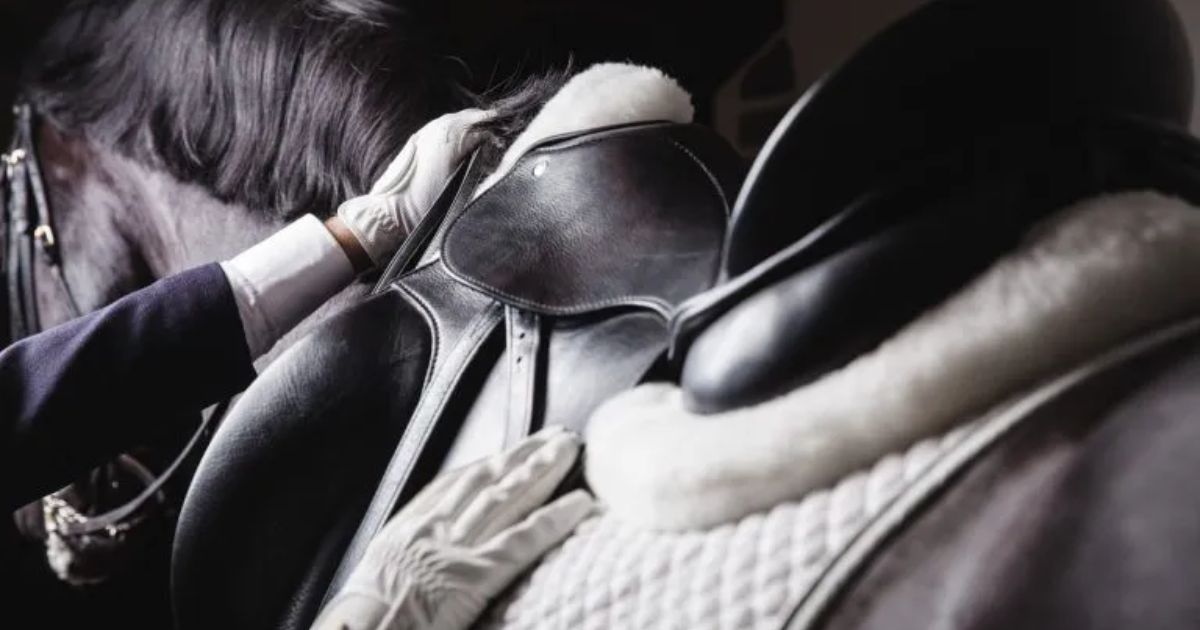Menu

There are many beautiful horses that one quickly falls for just because of their appearance. The problem is just that many horse owners forget to look at the horse's build and their own and assess whether it is a good match. The advice from saddle maker Charlotte Knigge is: “Be realistic about yourself as a rider and the horse you buy.”
Being a saddle maker can be somewhat of a task, tells Charlotte. Over time, especially dressage horses are bred shorter, and Nordic men and women, on the other hand, have not become smaller. Our bodies are naturally often long and broad, and this can pose challenges when the horse needs a saddle that fits both it and the rider. Horses, as is well known, have 18 ribs (Arab horses only have 17), and the saddle must not extend further back than staying within the last rib. If the saddle fills more, there is a high risk of pressure marks and general discomfort for the horse.
Read also: TTouch: The help for nervous and tense horses is right at hand
One of the biggest challenges Charlotte Knigge encounters in her work as a saddle maker is that people are not always entirely realistic about their own size versus that of the horse.
"Many buy horses based on appearance, but they forget to look at the horse's build. My advice is that when you want to invest in a new horse, get the saddle seat measured, so you know if you can actually fit your own horse."
Saddle Maker Charlotte Knigge.
Of course, it's not always possible to have the full size of one's horse, for example, if you buy a young horse. But Charlotte often meets customers who are uncomprehending when she tells them that it's an impossible task to find a saddle that fits both horse and rider.
"I find it quite hard to have to tell people that they are simply too big for their own horse. And that's also incredibly hard to hear as a horse owner. But I can't tell people they can be in a 16-inch saddle that fits the horse if that's not the case. I would rather have the conversation."
Saddle Maker Charlotte Knigge.
As a starting point, there isn't much a saddle maker can do if horse and rider are completely different from each other. If there is a smaller size difference, the saddle can be shaped to better match horse and rider. This can, for example, be:
These points are taken, by agreement, from Charlotte Knigge's website, where you can find much more information on the topic.
Read also: It creates a very special bond that I can't ride on my ponies
It's not uncommon for Charlotte to hear that it might be a good idea to put a slightly too large saddle on the horse. The argument she often hears is that it gives the horse something to grow into (if it's a young horse) and gives it more freedom of movement. Charlotte, however, does not agree with this. A study also suggests that these thoughts are misguided. The research shows that horses with too large saddles experience more soreness, and the saddles are generally a nuisance for the horse.
Many riders are told that if there is a need for sheepskin or a saddle pad, then the saddle is not properly fitted. Charlotte Knigge disagrees with this. Of course, one must ensure that the saddle fits correctly on the horse, but once that is in place, she sees no problem in using the mentioned "aids".
"Basically, it is the owner who knows their horse best. If they experience that the horse moves best with sheepskin or a saddle pad, then they should, of course, continue with it. It's not my job to question customers' feelings, as they are usually correct."
Saddle Maker Charlotte Knigge.
Read also: Trainer: How to achieve the optimal and forward-Moving walk
See more advice on Charlotte Knigge's website.